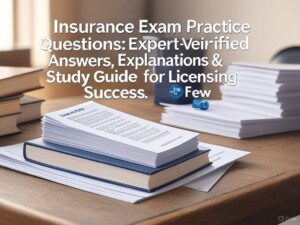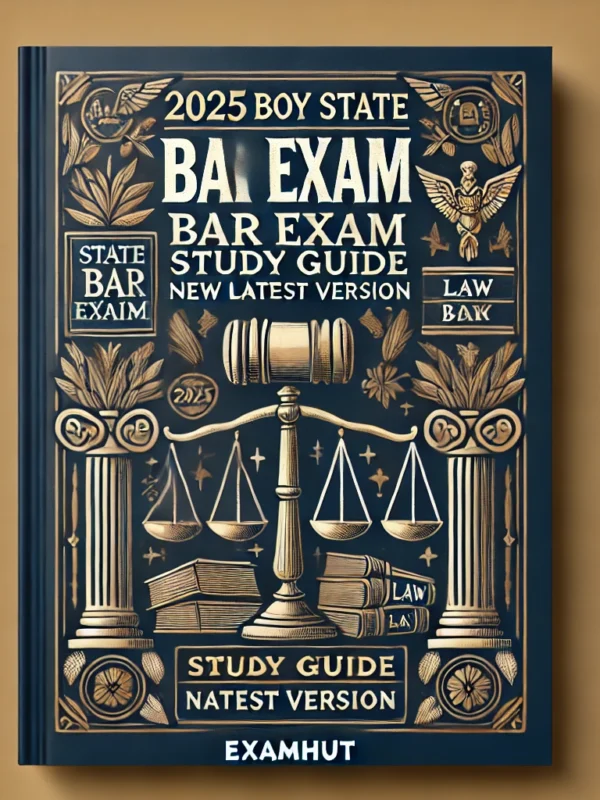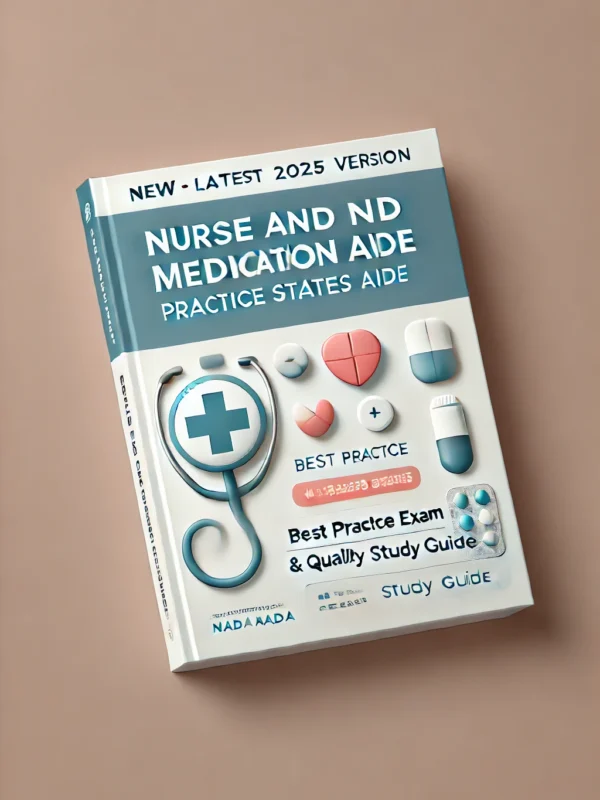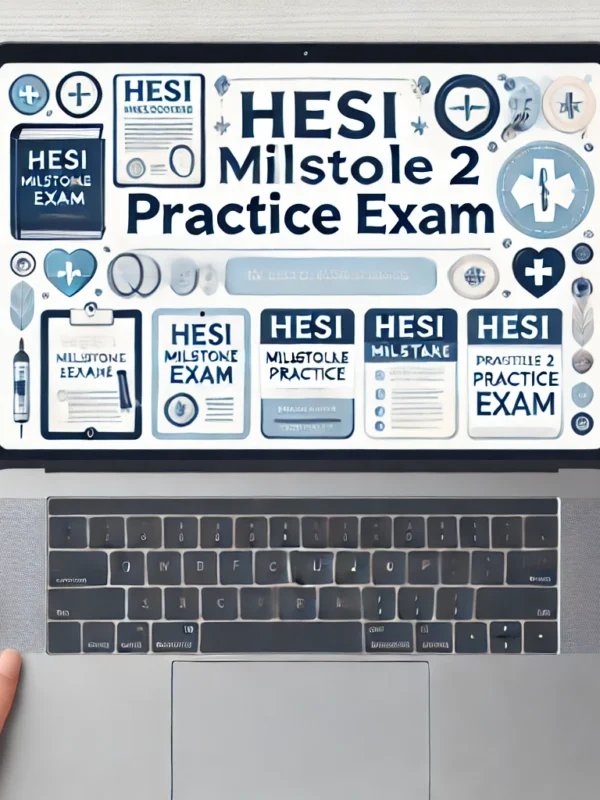Pass your insurance licensing exam with confidence using this comprehensive set of practice questions, complete with expert-verified answers, detailed explanations, and a thorough study guide. Designed for aspiring insurance professionals, this resource covers essential topics such as insurance regulations, policy types, underwriting, and claims processing, aligning with industry standards for licensing exams. Each practice question is carefully crafted to mirror the actual exam format, with clear explanations to reinforce your understanding and ensure mastery of key concepts. This guide is your ultimate tool for achieving licensing success.
Preview
1. Acme Insurers recently started an advertising campaign in Pennsylvania for its new
life insurance policies. Which statement is TRUE?
A. Acme can compare its products to competitors only if such comparisons are fair and
complete.
B. Acme may not use paid endorsements in the advertisements.
C. Acme’s advertisements cannot mention other competitors or products.
D. Acme may not use testimonials in the advertisements.
Correct Answer: A. Acme can compare its products to competitors only if such
comparisons are fair and complete.
Rationale: Insurance regulations allow companies to compare their products to
competitors as long as the comparisons are accurate, fair, and not misleading. Companies
may use endorsements and testimonials but must follow guidelines to prevent deceptive
advertising.
2. Under the Patient Protection and Affordable Care Act, the terms platinum level, gold
level, silver level, and bronze level refer to a classification of health insurance plans
that differ by:
A. The percentage of essential health benefit (EHB) costs in the general population funded
by the plan.
B. The underwriting classification assigned to the insured.
C. The deductible and coinsurance requirements of the plan.
D. The number of essential health benefits (EHBs) covered under the plan.
Correct Answer: A. The percentage of essential health benefit (EHB) costs in the general
population funded by the plan.
Rationale: These “metal” categories represent the actuarial value of the plan, meaning
how much the insurer covers versus what the insured pays out-of-pocket. Platinum covers
the highest percentage of costs, while bronze covers the lowest.
3. Under the proof of loss provision of a health insurance policy, how long does the
insured have to give written proof of loss to the insurer?
A. 120 days
B. 10 days
C. 90 days
D. 30 days
Correct Answer: C. 90 days
Rationale: Health insurance policies typically require proof of loss to be submitted within
90 days after the occurrence of a loss, ensuring timely processing of claims.
4. The time limit on certain defenses provision in a health insurance policy is like
which provision in a life insurance policy?
A. Reinstatement
B. Payment of claims
C. Grace period
D. Incontestable clause
Correct Answer: D. Incontestable clause
Rationale: The incontestable clause in life insurance and the time limit on certain
defenses in health insurance both prevent the insurer from contesting the policy after a
specified period, except in cases of fraud.
life insurance policies. Which statement is TRUE?
A. Acme can compare its products to competitors only if such comparisons are fair and
complete.
B. Acme may not use paid endorsements in the advertisements.
C. Acme’s advertisements cannot mention other competitors or products.
D. Acme may not use testimonials in the advertisements.
Correct Answer: A. Acme can compare its products to competitors only if such
comparisons are fair and complete.
Rationale: Insurance regulations allow companies to compare their products to
competitors as long as the comparisons are accurate, fair, and not misleading. Companies
may use endorsements and testimonials but must follow guidelines to prevent deceptive
advertising.
2. Under the Patient Protection and Affordable Care Act, the terms platinum level, gold
level, silver level, and bronze level refer to a classification of health insurance plans
that differ by:
A. The percentage of essential health benefit (EHB) costs in the general population funded
by the plan.
B. The underwriting classification assigned to the insured.
C. The deductible and coinsurance requirements of the plan.
D. The number of essential health benefits (EHBs) covered under the plan.
Correct Answer: A. The percentage of essential health benefit (EHB) costs in the general
population funded by the plan.
Rationale: These “metal” categories represent the actuarial value of the plan, meaning
how much the insurer covers versus what the insured pays out-of-pocket. Platinum covers
the highest percentage of costs, while bronze covers the lowest.
3. Under the proof of loss provision of a health insurance policy, how long does the
insured have to give written proof of loss to the insurer?
A. 120 days
B. 10 days
C. 90 days
D. 30 days
Correct Answer: C. 90 days
Rationale: Health insurance policies typically require proof of loss to be submitted within
90 days after the occurrence of a loss, ensuring timely processing of claims.
4. The time limit on certain defenses provision in a health insurance policy is like
which provision in a life insurance policy?
A. Reinstatement
B. Payment of claims
C. Grace period
D. Incontestable clause
Correct Answer: D. Incontestable clause
Rationale: The incontestable clause in life insurance and the time limit on certain
defenses in health insurance both prevent the insurer from contesting the policy after a
specified period, except in cases of fraud.










Reviews
There are no reviews yet.